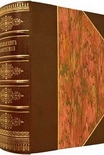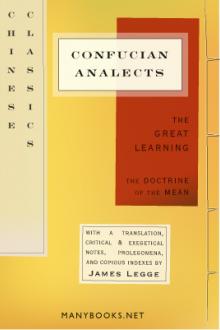Myths and Legends of China by E. Werner (free ebook reader for iphone TXT) 📗

- Author: E. Werner
Book online «Myths and Legends of China by E. Werner (free ebook reader for iphone TXT) 📗». Author E. Werner
Into details of the various exploits of the three Brothers of the Peach-orchard we need not enter here. They are written in full in the book of the Story of the Three Kingdoms, a romance in which every Chinese who can read takes keen delight. Kuan Yü remained faithful to his oath, even though tempted with a marquisate by the great Ts’ao Ts’ao, but he was at length captured by Sun Ch’üan and put to death (A.D. 219). Long celebrated as the most renowned of China’s military heroes, he was ennobled in A.D. 1120 as Faithful and Loyal Duke. Eight years later he had conferred on him by letters patent the still more glorious title of Magnificent Prince and Pacificator. The Emperor Wên (A.D. 1330–3) of the Yüan dynasty added the appellation Warrior Prince and Civilizer, and, finally, the Emperor Wan Li of the Ming dynasty, in 1594, conferred on him the title of Faithful and Loyal Great Ti, Supporter of Heaven and Protector of the Kingdom. He thus became a god, a ti, and has ever since received worship as Kuan Ti or Wu Ti, the God of War. Temples (1600 State temples and thousands of smaller ones) erected in his honour are to be seen in all parts of the country. He is one of the most popular gods of China. During the last half-century of the Manchu Period his fame greatly increased. In 1856 he is said to have appeared in the heavens and successfully turned the tide of battle in favour of the Imperialists. His portrait hangs in every tent, but his worship is not confined to the officials and the army, for many trades and professions have elected him as a patron saint. The sword of the public executioner used to be kept within the precincts of his Page 118temple, and after an execution the presiding magistrate would stop there to worship for fear the ghost of the criminal might follow him home. He knew that the spirit would not dare to enter Kuan Ti’s presence.
Thus the Chinese have no fewer than three gods of literature—perhaps not too many for so literary a people. A fourth, a Taoist god, will be mentioned later.
Buddhism in China
Buddhism and its mythology have formed an important part of Chinese thought for nearly two thousand years. The religion was brought to China about A.D. 65, ready-made in its Mahayanistic form, in consequence of a dream of the Emperor Ming Ti (A.D. 58–76) of the Eastern Han dynasty in or about the year 63; though some knowledge of Buddha and his doctrines existed as early as 217 B.C. As Buddha, the chief deity of Buddhism, was a man and became a god, the religion originated, like the others, in ancestor-worship. When a man dies, says this religion, his other self reappears in one form or another, “from a clod to a divinity.” The way for Buddhism in China was paved by Taoism, and Buddhism reciprocally affected Taoism by helpful development of its doctrines of sanctity and immortalization. Buddhism also, as it has been well put by Dr De Groot,7 “contributed much to the ceremonial adornment of ancestor-worship. Its salvation work on behalf of the dead saved its place in Confucian China; for of Confucianism itself, piety and devotion towards parents and ancestors, and the promotion of their happiness, were the core, and, consequently, their worship with sacrifices and ceremonies was always a sacred duty.” Page 119It was thus that it was possible for the gods of Buddhism to be introduced into China and to maintain their special characters and fulfil their special functions without being absorbed into or submerged by the existing native religions. The result was, as we have seen, in the end a partnership rather than a relation of master and servant; and I say ‘in the end’ because, contrary to popular belief, the Chinese have not been tolerant of foreign religious faiths, and at various times have persecuted Buddhism as relentlessly as they have other rivals to orthodox Confucianism.
Buddha, the Law, and the Priesthood
At the head of the Buddhist gods in China we find the triad known as Buddha, the Law, and the Church, or Priesthood, which are personified as Shih-chia Fo (Shâkya), O-mi-t’o Fo (Amita), and Ju-lai Fo (Tathagata); otherwise Fo Pao, Fa Pao, and Sêng Pao (the San Pao, ‘Three Precious Ones’)—that is, Buddha, the prophet who came into the world to teach the Law, Dharma, the Law Everlasting, and Samgha, its mystical body, Priesthood, or Church. Dharma is an entity underived, containing the spiritual elements and material constituents of the universe. From it the other two evolve: Buddha (Shâkyamuni), the creative energy, Samgha, the totality of existence and of life. To the people these are three personal Buddhas, whom they worship without concerning themselves about their origin. To the priests they are simply the Buddha, past, present, or future. There are also several other of these groups or triads, ten or more, composed of different deities, or sometimes containing one or two of the triad already named. Shâkyamuni heads the list, having a place in at least six. Page 120
The legend of the Buddha belongs rather to Indian than to Chinese mythology, and is too long to be reproduced here.8
The principal gods of Buddhism are Jan-têng Fo, the Light-lamp Buddha, Mi-lo Fo (Maitrêya), the expected Messiah of the Buddhists, O-mi-t’o Fo (Amitabha or Amita), the guide who conducts his devotees to the Western Paradise, Yüeh-shih Fo, the Master-physician Buddha, Ta-shih-chih P’u-sa (Mahastama), companion of Amitabha, P’i-lu Fo (Vairotchana), the highest of the Threefold Embodiments, Kuan Yin, the Goddess of Mercy, Ti-tsang Wang, the God of Hades, Wei-t’o (Vihârapâla), the Dêva protector of the Law of Buddha and Buddhist temples, the Four Diamond Kings of Heaven, and





Comments (0)